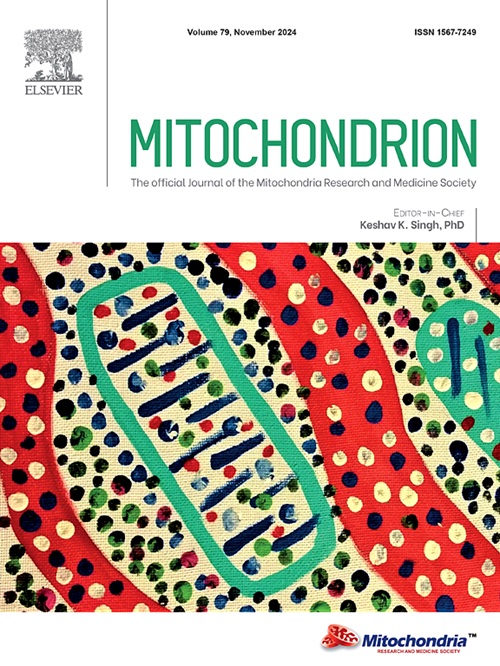Mitochondrial DNA variants in normal skins: Insights into prevalent pathogenic variants and quality control surveillance
IF 4.5
3区 生物学
Q2 CELL BIOLOGY
引用次数: 0
Abstract
Mitochondrial genome diversity in normal tissues remains poorly understood due to 100 to 1000 copies of mitochondrial DNA in a cell. This study analyzed mitochondrial DNA variants in two distant sites of normal skin tissues from 119 breast surgery cases using deep sequencing. We identified 1337 variants across the mitochondrial genome (59.1 % in coding region). Intriguingly variants were categorized two groups, homoplasmic (81.1 %) or low heteroplasmy rate group (14.1 %). Even MITOMAP pathogenic variants, two out of eight were homoplasmic, common in several patients, and found in both skin sites of the same individual, while six heteroplasmic pathogenic variants were identified in a single patient with < 5 % heteroplasmy rates, half only detected in a single skin site with < 2 % rates. Pathogenic mutations predicted by AlphaMissense were significantly less common in the homoplasmic group (30/1085) but more common in the heteroplasmic group (216/431). Significant increases of mitochondrial copy number were also repeatedly detected in cases with pathogenic variants. This study provides new insights into the diversity of mitochondrial genome and the complexity of mitochondrial homeostasis in normal skin tissue, including the possibility of evading pathogenic mutations through quality control surveillance and the restoration of mitochondrial function due to increase in copy number.
正常皮肤中的线粒体DNA变异:对流行致病变异和质量控制监测的见解。
正常组织中的线粒体基因组多样性仍然知之甚少,因为一个细胞中有100到1000个线粒体DNA拷贝。本研究利用深度测序技术分析了119例乳房手术患者正常皮肤组织两个远端部位的线粒体DNA变异。我们在线粒体基因组中鉴定出1337个变异(编码区59.1% %)。有趣的是,变异被分为两组,同质组(81.1 %)和低异质性组(14.1 %)。即使是MITOMAP致病变异,8个中有2个是同质性的,在几个患者中很常见,并且在同一个体的两个皮肤部位发现,而6个异质性致病变异在1个患有MITOMAP的患者中被发现
本文章由计算机程序翻译,如有差异,请以英文原文为准。
求助全文
约1分钟内获得全文
求助全文
来源期刊

Mitochondrion
生物-细胞生物学
CiteScore
9.40
自引率
4.50%
发文量
86
审稿时长
13.6 weeks
期刊介绍:
Mitochondrion is a definitive, high profile, peer-reviewed international research journal. The scope of Mitochondrion is broad, reporting on basic science of mitochondria from all organisms and from basic research to pathology and clinical aspects of mitochondrial diseases. The journal welcomes original contributions from investigators working in diverse sub-disciplines such as evolution, biophysics, biochemistry, molecular and cell biology, genetics, pharmacology, toxicology, forensic science, programmed cell death, aging, cancer and clinical features of mitochondrial diseases.
 求助内容:
求助内容: 应助结果提醒方式:
应助结果提醒方式:


